The Strange Virtue of Going Uphill
Before the Tour de France went up Mount Ventoux, there was Petrarch.
In 1336, the Italian poet Petrarch was halfway up Mount Ventoux and it wasn’t going well.
He was struggling—not just with the steepness of the climb, but with his own reluctance to face it head-on. As his hiking partners charged straight up the ridge, Petrarch kept veering onto easier, circuitous paths that led nowhere, doubling back in frustration. The poet was trying (and failing) to cheat the mountain's logic: that up is the only way to reach the top.
Born and raised in the Tuscan town of Arezzo in 1304, Francesco Petrarca was one of Europe’s first humanists. Students still unpack his lyrical poetry and Latin translations of Cicero and Virgil, but he’s most famous for coining the phrase “the Dark Ages” to describe a period of intellectual stagnation that followed the enlightened eras of Greek and Roman antiquity.

Medieval and early modern historians now dispute Petrarch’s Dark Ages label (a lot of interesting culture did happen in the Middle Ages), but at the time his writing spurred new interest in Greek and Roman philosophy and art. It was a re-birth or, in French, a “re-naissance” of sorts.
But on a pleasant Provençal day in April of 1336, Petrarch was just a climbing noob, struggling up a hillside.
And what a hill.
Today, Mount Ventoux is best known as a brutal feature of the Tour de France. Nicknamed the “Beast of Provence” by riders, the 6,200-foot mountain’s actual name comes from intense mistral winds that blow over its crest.
Next week, cyclists in this year’s Tour will finish Stage 16 by riding up Ventoux’s windy flank—an average gradient of 7.4% over 13 miles to the lunar-like summit.
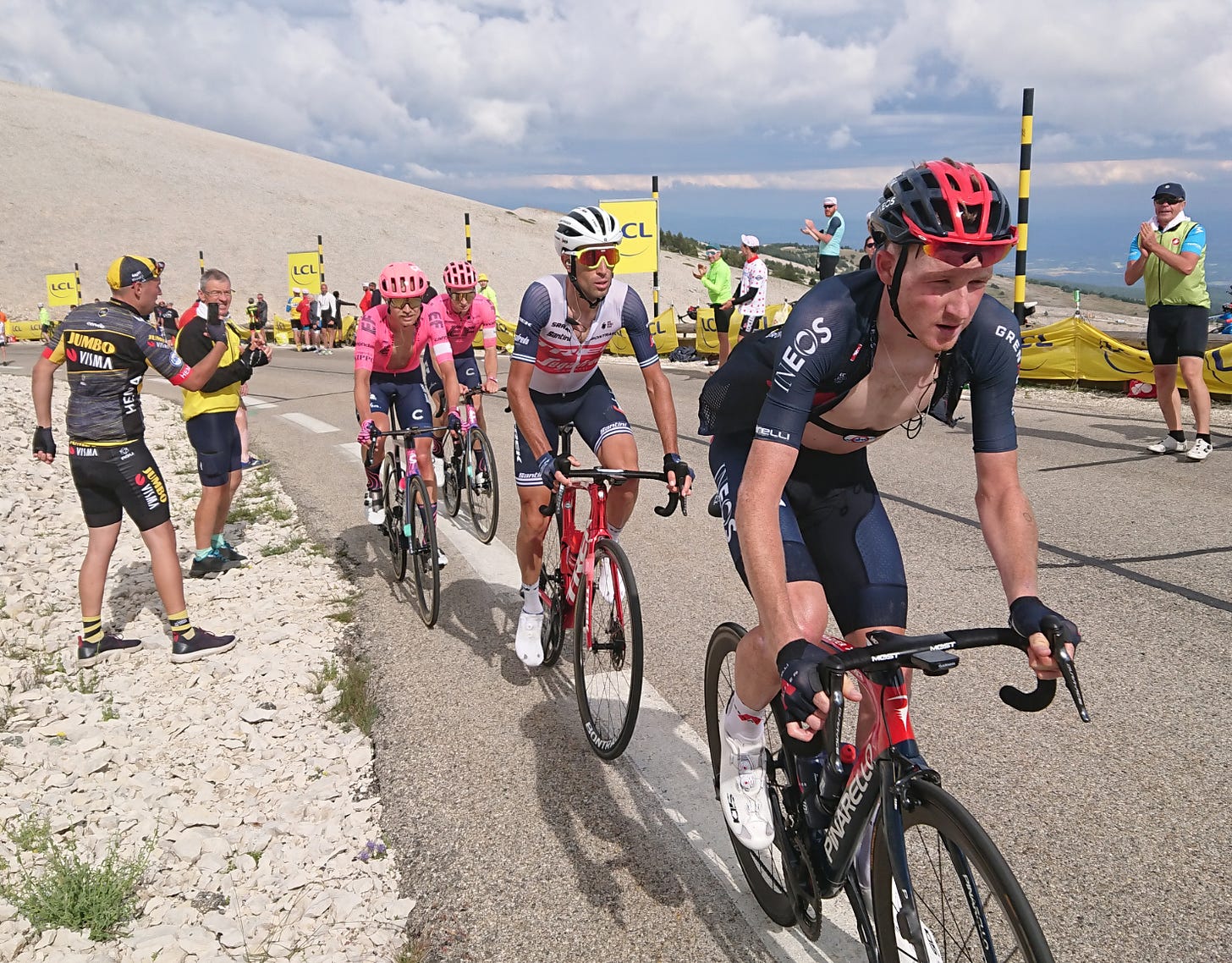
700 years ago, Petrarch climbed for the view.
His motives for hiking up Ventoux will sound familiar to modern ears: he wished “to see what so great an elevation had to offer.”
Starting up the mountain with his brother and two servants, the climb began well enough, despite warnings from locals:
We found an old shepherd in one of the mountain dales, who tried, at great length, to dissuade us from the ascent, saying that some fifty years before he had, in the same ardor of youth, reached the summit, but had gotten for his pains nothing except fatigue and regret, and clothes and body torn by the rocks and briars.
Despite their youthful confidence, the group became weary. As fatigue set in, the poet was frustrated trying to find gentler routes to the top. He detoured from his group several times, taking meandering paths to avoid the steepest pitches, but without making upward progress:
While my brother chose a direct path straight up the ridge, I weakly took an easier one which really descended … and when the others had already reached a considerable height I was still wandering in the valleys.
Eventually, Petrarch did a reset. He sat down and “transferred my winged thoughts from things corporeal to the immaterial.” Focusing on the climb as a metaphor for the difficult journey of life, he put his head down and huffed it up to the summit.
I can relate to Petrarch.
There’s something about an uphill that focuses your mind, a gravitational reckoning, tapping into reservoirs of energy to lift yourself in ascent.
Near where I live in northern California, Mount Diablo looms over the hills east of Oakland. Compared with Mount Ventoux, it’s a comparatively modest 3,800-foot climb on maintained trails and fireroads.
But I always appreciate how the mountain distills my focus. My eyes level upon the patch of trail before me; my breath syncs in rhythm to my steps. At the summit, I pause. It feels notable—literally the top of something.
Ascending a mountain under your own power is now considered a virtuous accomplishment (and the engine of a considerable amount of nature tourism). We put plaques at high points, note their elevation on maps, and make competitions out of the climb.
Consider pop culture: Rocky runs up the Philadelphia Museum of Art’s steps at the emotional apex of the film. Frodo and Sam slog up Mount Doom in The Lord of the Rings to destroy the ring. Kate Bush’s “Running Up That Hill” is the emotional thread for season 4 of Stranger Things.
That’s saying nothing of the countless media about actual climbing, like Free Solo—a breakout documentary hit about a guy climbing cliffs without a rope. We take the virtue of an uphill for granted.
But it wasn’t always this way.
For much of European history, mountains were regarded with disdain.
The ancient Greeks were generally repelled by them. Romans found them desolate and hostile. In the 16th century, Martin Luther saw them as divine punishment, formed by the Flood that marred the perfectly round antediluvian Earth. In 1611, the poet John Donne called mountains “warts, and pock-holes in the face of th’ earth.” Another writer, upon visiting the Swiss Alps, said they looked “as if nature had here swept up the rubbish of the earth.”1
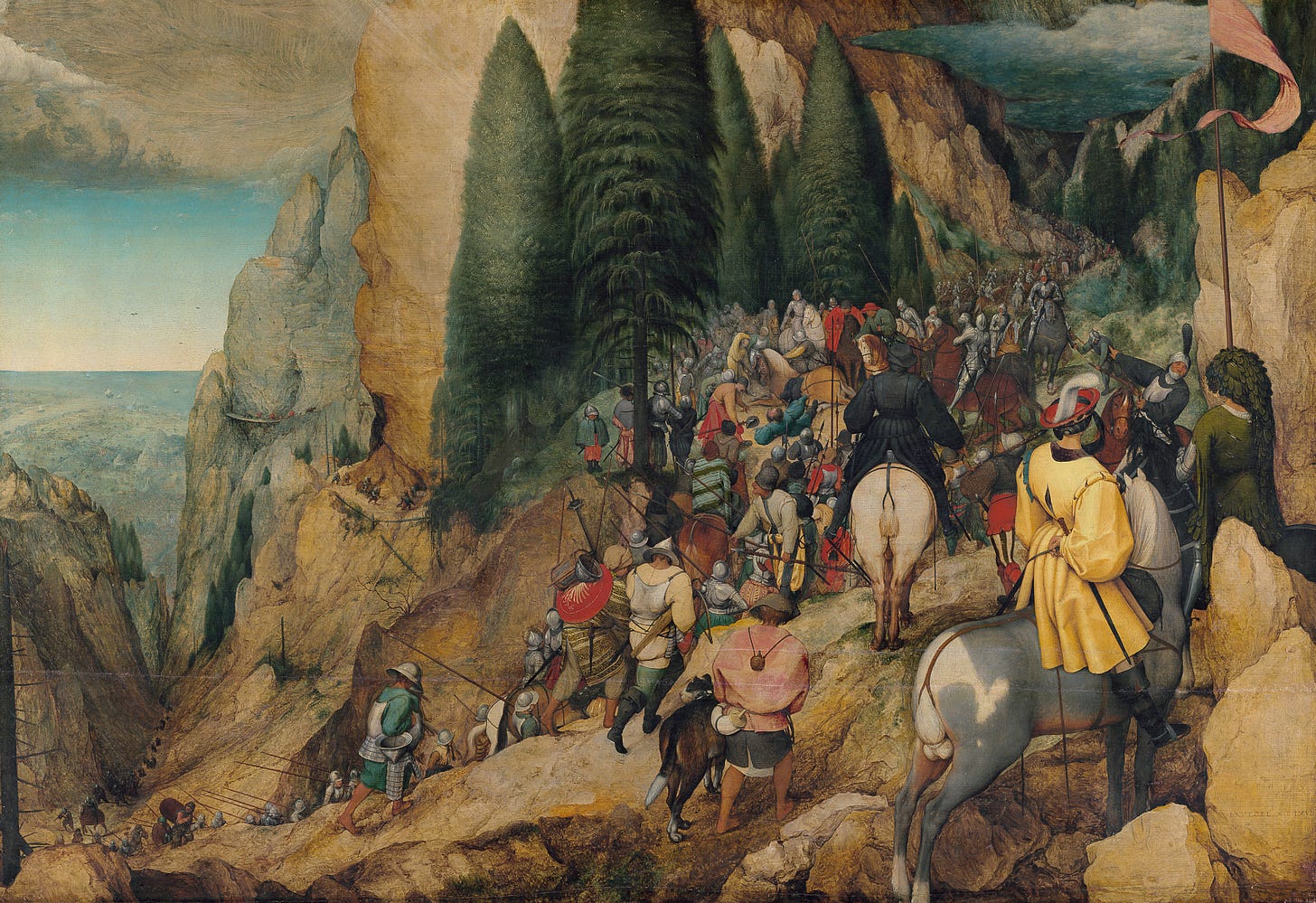
The hostility stemmed from an aesthetic inherited from the Middle Ages. Christian thinkers adapted ideas from Plato and the Pythagoreans that valued harmony and proportion in music, architecture, and nature.
Well into the 1600s, most Europeans believed proportionality was inherent to beauty and virtue. The irregularity and asymmetry of hills and mountains were deemed ugly and to be avoided.
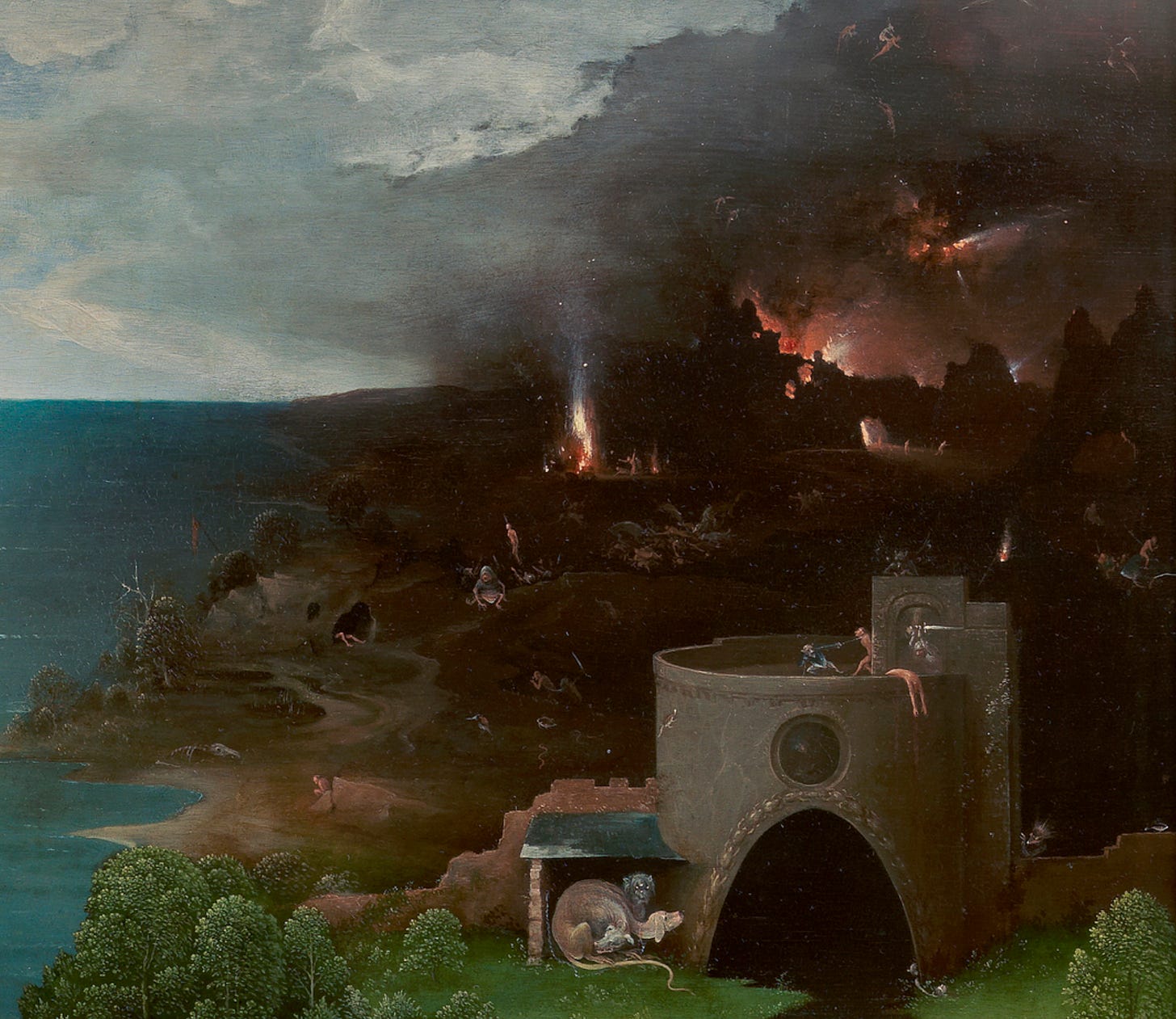
What changed?
According to Marjorie Hope Nicholson in Mountain Gloom and Mountain Glory, it was partly the telescope. Astronomers and cosmographers reconsidered the terrestrial world as they observed celestial objects with new detail. Scholars like Copernicus, Bruno, Galileo, and Milton contemplated the vast, infinite scale of the cosmos and cultivated a new appreciation of natural wilderness: an aesthetic of the natural as sublime.2
Over time, especially during the Romanticism of the 18th and 19th centuries, society became culturally primed to be wowed by steep hills and big views.3
Redeemed as sublime wilderness, Europeans spent more time in mountains. As people explored, including along the American frontier, they felt a double-movement of the mind, wherein engagement with our external surroundings shapes our internal thoughts.
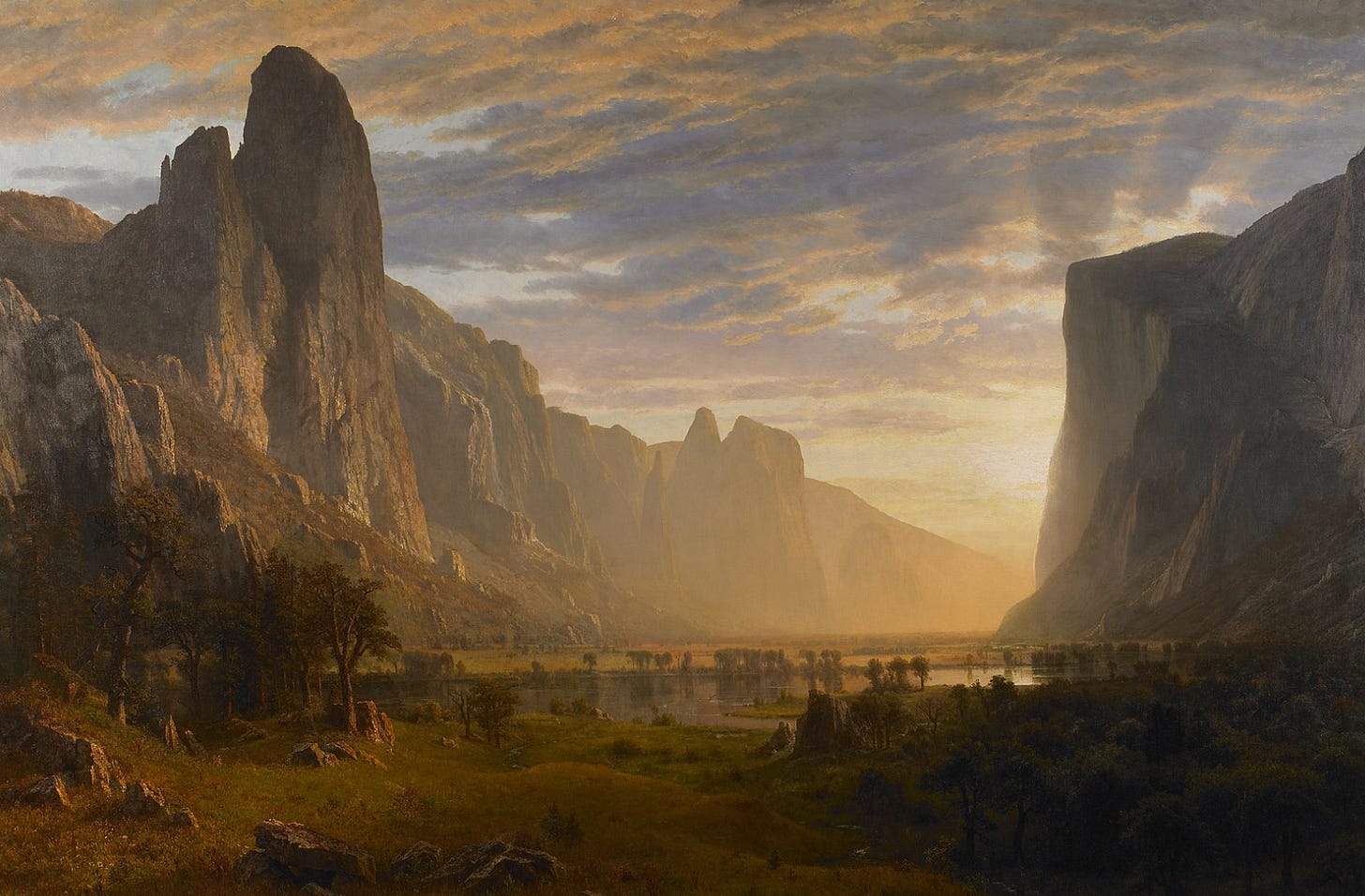
Petrarch’s account was an early reflection of this tension—between inner mind and exterior world.
When he reached the summit, he was stunned by “the great sweep of view” spread before him. He beheld the clouds beneath him and the Alps that “seemed to rise close by, although they were really at a great distance.”
The view spurred him to contemplation. Sitting at the summit, Petrarch cracked open a copy of Confessions and, while reading, reflected on the winding path of his soul.
It was a move so earnest, contemporaries might have cringed. Outside of scripture the Confessions, Saint Augustine’s didactic autobiography, was Christendom’s most famous book. Petrarch schlepping a copy up Ventoux was the 14th-century equivalent of hiking up Half Dome with a paperback of Infinite Jest in your cargo shorts.
Even still, Petrarch’s reading at the summit was precocious. His account of the ascent is an early source of how Europeans came to understand the outward, natural world as shaping and forming our inner lives.
We moderns—running, cycling, hiking in our lycra—we traverse terrain and can’t help but ponder its meaning. We find metaphors in uphill effort, turning ascent into similes for the other parts of our lives. We map the challenges overcome in life upon the mountains we climb. We imbue virtue into uphills.
How bizarre. How curious. How quintessentially modern.
This post was originally published in 2023 and has been re-written and edited. You can read Petrarch’s “Ascent of Mount Ventoux” in Fordham University’s Medieval Sourcebook. For another take on Petrarch and modern notions of mountain climbing, read Michael Kimmelman’s piece “NOT Because It’s There” from 1999 in New York Times Magazine.
That’s all for this week. Thanks for reading.
John Donne, “The First Anniversary,” in The Variorum Edition of the Poetry of John Donne, ed. Gary Stringer (Bloomington: Indiana University Press, 1995), 6:13.
Marjorie Hope Nicolson, Mountain Gloom and Mountain Glory: The Development of the Aesthetics of the Infinite (Seattle: University of Washington Press, 1997).
This is, admittedly, a myopically Western cultural history. For just one example of of how nature was understood more variously over time, consider Chinese medieval landscapes, which depict mountainous space with a vibrant intensity. Throughout the Tang, Song, and Yuan dynasties, the natural world remained a continual thematic focus for various political and cultural projects. (Metropolitan Museum of Art)




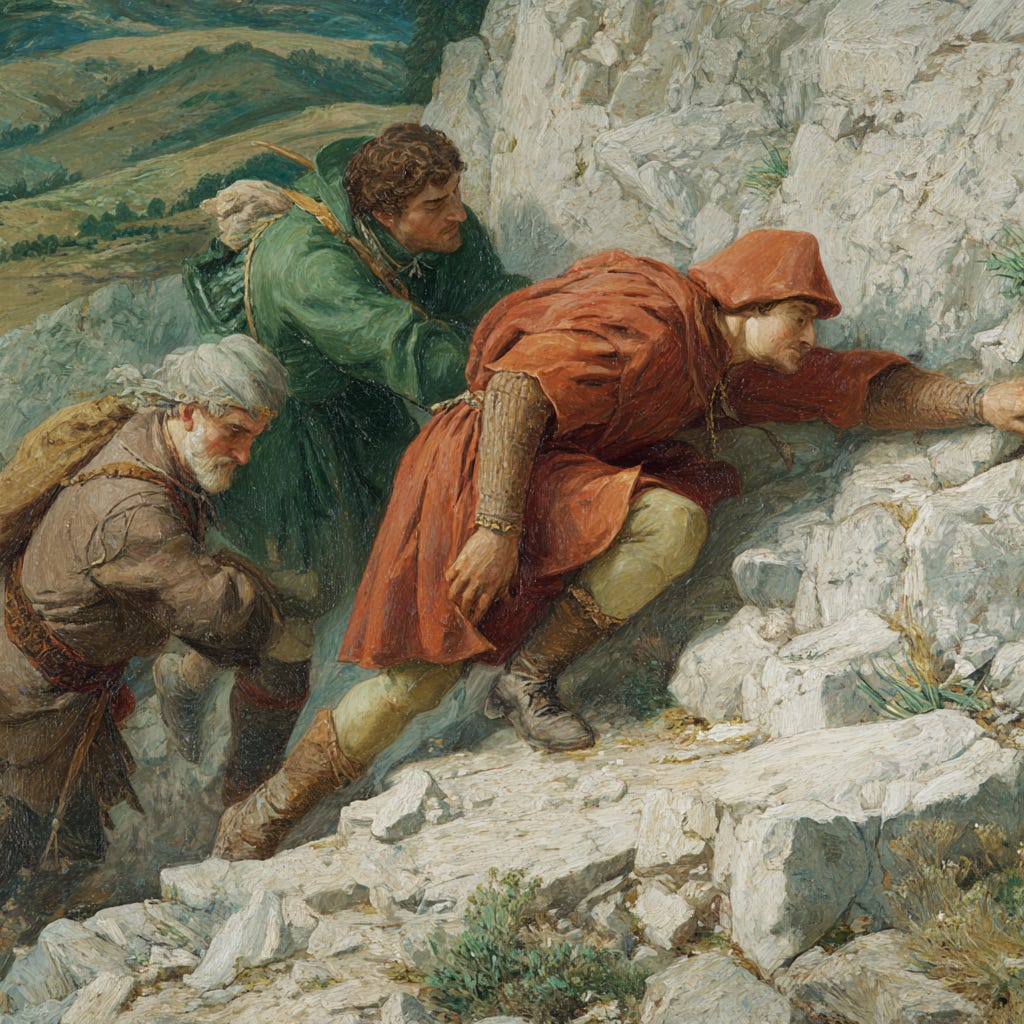

Everyone wants the view, but only a few are willing to climb the mountain. This is a metaphor I often use for people who want something without the required work. In your stories case, it was literal as well as metaphorical. Great piece Sam!
Really enjoyed this piece. It captured something I’ve never quite been able to explain… the weird logic of doing something hard, again and again, just because.
Made me think of the Club des Cinglés (climbing Mont Ventoux from all three sides in one day). We did it once, and by the third ascent we felt completely foolish. We’ve already gone up twice, already come down twice… why do it again? (During „afternoon hell“, which is what they called it in the little booklet you get when you sign up for the challenge 🙈.) The mountain doesn’t care that you to come back a third time. And yet…